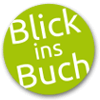Enseignement de l'arabe parlé & de l'arabe régulier d'après la méthode directe... lectures choisies, offers a comprehensive approach to learning Arabic, focusing on both spoken and standard forms through direct instruction. This volume presents a curated selection of readings, including tales, fables, anecdotes, and accounts of Arab life, customs, and traditions. Designed for educators and students alike, this book provides valuable insights into Arabic language and culture.
Originally published in 1906, this historical educational resource provides a window into early 20th-century language teaching methodologies. It remains a relevant text for those seeking a deeper understanding of the Arabic language within its cultural context. This work has been selected by scholars as being culturally important, and is part of the knowledge base of civilization as we know it. This work was reproduced from the original artifact, and remains as true to the original work as possible. Therefore, you will see the original copyright references, library stamps (as most of these works have been housed in our most important libraries around the world), and other notations in the work. This work is in the public domain in the United States of America, and possibly other nations. Within the United States, you may freely copy and distribute this work, as no entity (individual or corporate) has a copyright on the body of the work. As a reproduction of a historical artifact, this work may contain missing or blurred pages, poor pictures, errant marks, etc. Scholars believe, and we concur, that this work is important enough to be preserved, reproduced, and made generally available to the public. We appreciate your support of the preservation process, and thank you for being an important part of keeping this knowledge alive and relevant.
 Und dann auf "Zum Home-Bildschirm [+]".
Und dann auf "Zum Home-Bildschirm [+]".

